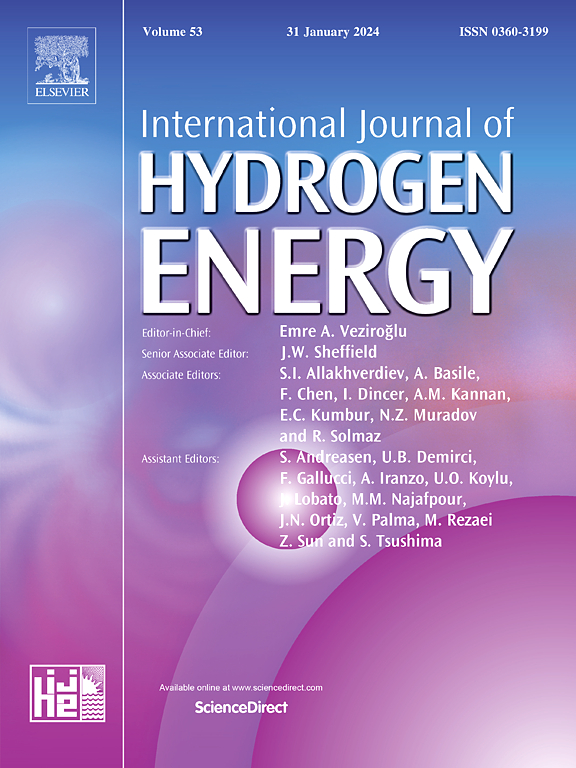Mn–Ce modified NiP electrocatalysts for HER: A combined computational and electrochemical study
IF 8.3
2区 工程技术
Q1 CHEMISTRY, PHYSICAL
引用次数: 0
Abstract
The task of developing inexpensive, more efficient, and stable catalysts for hydrogen evolution reaction in water splitting is increasingly challenging. In this study, we developed Mn–O–Ce embedded NiP coating using electroless plating, which proved to be a competent electrocatalyst for hydrogen evolution reaction (HER). To synthesize Mn–O–Ce composite, we utilized a thermal decomposition method. The physicochemical characterization of Mn–O–Ce/NiP coating envisaged an improved surface area. Moreover, the catalyst, which was provided by CeO2 and MnO2 particles in the NiP matrix, increased the surface roughness, thereby enhancing the number of surface-active sites. Electrochemical characterization showed that Mn–O–Ce/NiP coating exhibited outstanding catalytic performance with a small overpotential of 120 mV and a small Tafel slope of 123 mV dec−1 at a current density of 10 mA cm−2. We also explored its catalytic performance for the hydrogen evolution reaction (HER) by computing the free energy change associated with hydrogen evolution. Furthermore, the coating demonstrated excellent electrochemical stability in alkaline solution. This study provides a feasible option for developing a composite incorporated electrode with desirable electrochemical properties for the extensive production of hydrogen.

Mn-Ce修饰的纳米颗粒电催化剂:计算与电化学相结合的研究
开发廉价、高效、稳定的水裂解析氢催化剂的任务越来越具有挑战性。本研究采用化学镀法制备了Mn-O-Ce包埋NiP涂层,该涂层可作为析氢反应(HER)的电催化剂。采用热分解法合成Mn-O-Ce复合材料。Mn-O-Ce /NiP涂层的物理化学特性设想了表面积的改善。此外,由NiP基体中的CeO2和MnO2颗粒提供的催化剂增加了表面粗糙度,从而增加了表面活性位点的数量。电化学表征表明,在电流密度为10 mA cm−2时,Mn-O-Ce /NiP涂层具有优异的催化性能,过电位为120 mV, Tafel斜率为123 mV dec−1。通过计算析氢反应的自由能变化,探讨了其对析氢反应的催化性能。此外,该涂层在碱性溶液中表现出良好的电化学稳定性。该研究为开发具有理想电化学性能的复合电极提供了一种可行的选择。
本文章由计算机程序翻译,如有差异,请以英文原文为准。
求助全文
约1分钟内获得全文
求助全文
来源期刊

International Journal of Hydrogen Energy
工程技术-环境科学
CiteScore
13.50
自引率
25.00%
发文量
3502
审稿时长
60 days
期刊介绍:
The objective of the International Journal of Hydrogen Energy is to facilitate the exchange of new ideas, technological advancements, and research findings in the field of Hydrogen Energy among scientists and engineers worldwide. This journal showcases original research, both analytical and experimental, covering various aspects of Hydrogen Energy. These include production, storage, transmission, utilization, enabling technologies, environmental impact, economic considerations, and global perspectives on hydrogen and its carriers such as NH3, CH4, alcohols, etc.
The utilization aspect encompasses various methods such as thermochemical (combustion), photochemical, electrochemical (fuel cells), and nuclear conversion of hydrogen, hydrogen isotopes, and hydrogen carriers into thermal, mechanical, and electrical energies. The applications of these energies can be found in transportation (including aerospace), industrial, commercial, and residential sectors.
 求助内容:
求助内容: 应助结果提醒方式:
应助结果提醒方式:


